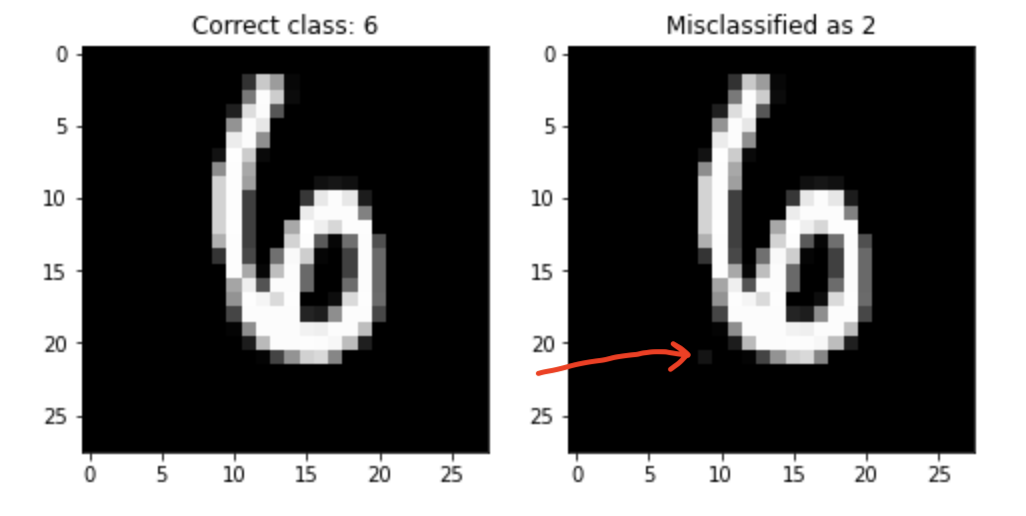This project tries to implement the idea mentioned in the paper which is to find finding for a given instance
xthe “nearest” instancex_primesuch that the classifier predictions ofxandx_primeare different.
Currently we have looked at Random Forest Classifiers ( scikit-learn ) implementation but the idea can easily be extended to GBDT. Currently the package implements the Approximate Evasion method implemented in the paper. For experimental evaluation we look at MNIST digit classification dataset with only two categories 2 and 6. The paper also chooses this dataset because it is well studied datasets, one-to-one mapping between pixels and features and features can vary independently of each other. We can pictorially represent evading instances, and this helps understanding the models’ robustness or lack of.
from sklearn.ensemble import RandomForestClassifier
from tree_evasion.core import *
from tree_evasion.tree import *
from tree_evasion.symbolic_prediction import *
Xtr, Xva, Xte, ytr, yva, yte = get_mnist_dataset(SEED)
clf = RandomForestClassifier(n_estimators=5, max_depth=4, random_state=SEED, n_jobs=-1)
clf.fit(Xtr, ytr)
# performance on the holdout set
print(clf.score(Xva, yva))
pairs = CoordinateDescent.get_pairs(clf, Xte)
In this example we want to change only one pixel for an instance and see if the classifier prediction changes or not. notebook
As the paper mentions, we expect a high performance learning algorithm to generalize well and be hard to evade: only a “large enough” perturbation δ should be able to alter its decision. The existence of small-δ evading instances shows a defect in the generalization ability of the model, and hints at improper model class and/or insufficient regularization.
Since machine learning systems are being deployed in many security-oriented applications. In these applications attacker has a large incentive to find evading instances and fool the system.
- We have only tackled the
Approximate Evasion, paper mentions another algorithm which uses Mixed Integer Linear Programming. - After finding good evading instances, author suggests to include them in the training set and retrain. This process is called
Adversarial Boosting.


